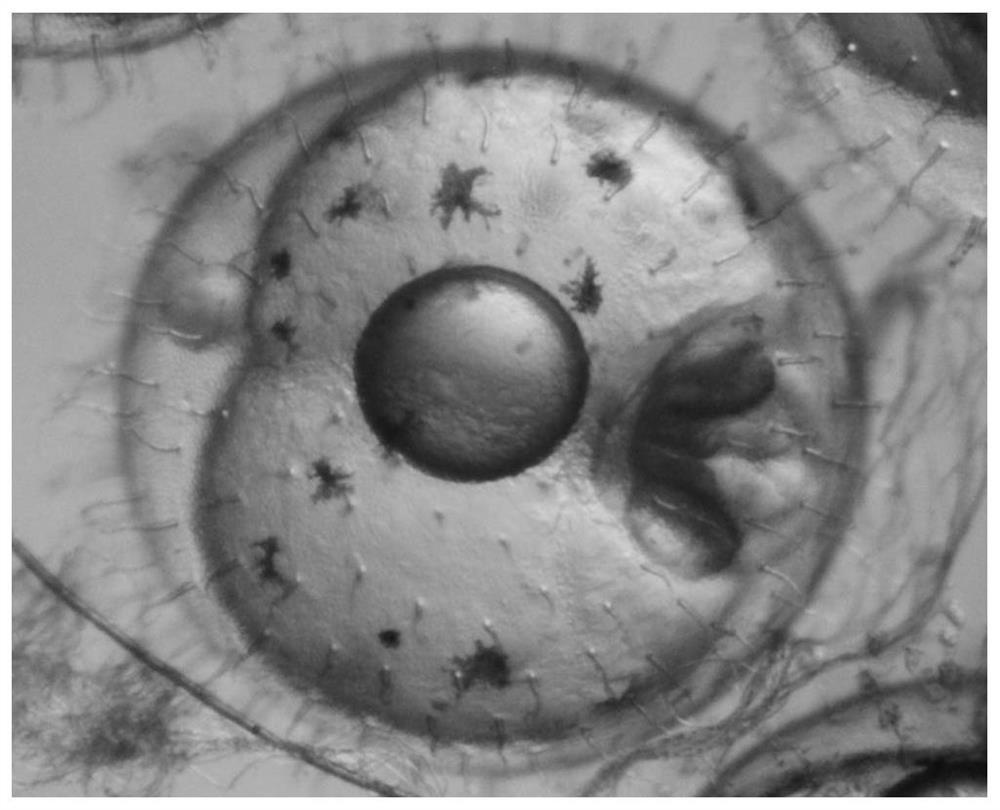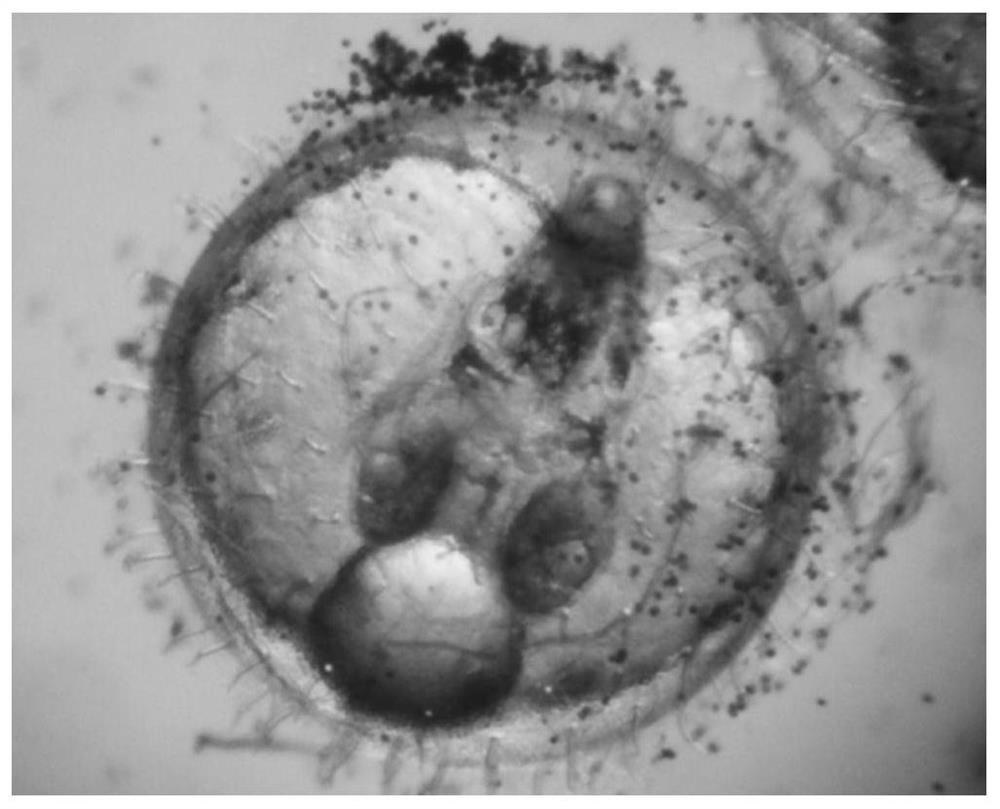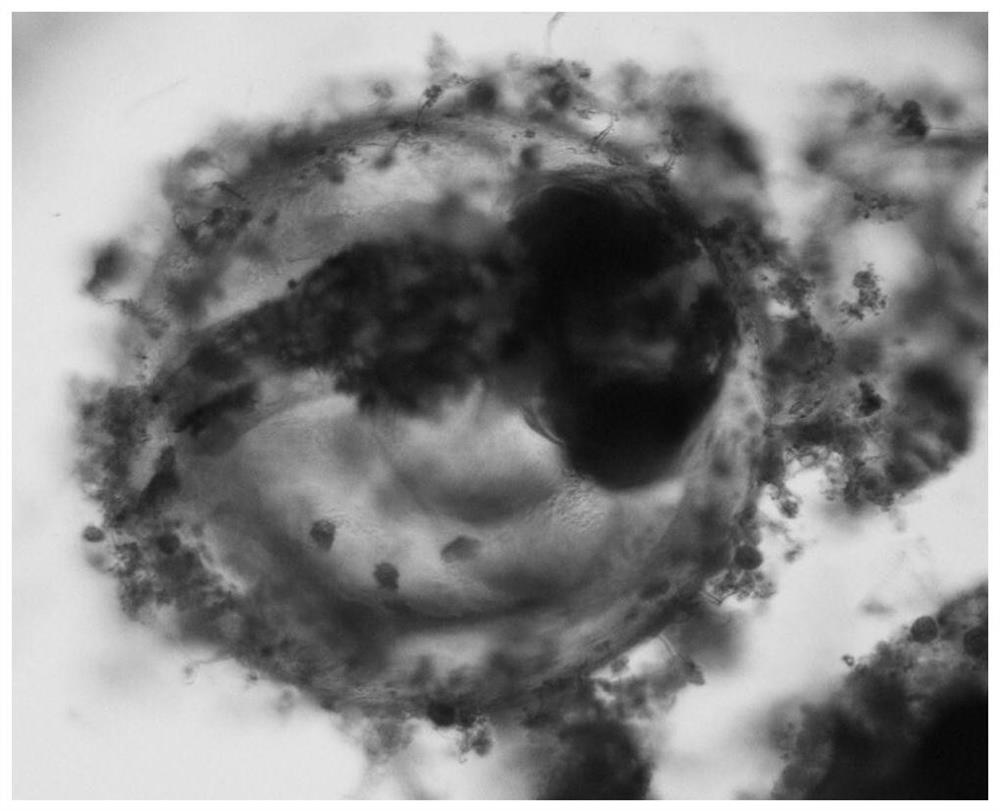A method for hatching fertilized eggs of seawater medaka
A fertilized egg and seawater technology, applied in climate change adaptation, application, fish farming, etc., can solve problems such as thickening and inevitable blackening of fertilized eggs
- Summary
- Abstract
- Description
- Claims
- Application Information
AI Technical Summary
Problems solved by technology
Method used
Image
Examples
Embodiment 1
[0025] A kind of efficient seawater medaka (Oryzias melastigma) fertilized egg incubation method is characterized in that:
[0026] The physicochemical conditions of described incubation method are as follows:
[0027] The experimental seawater is taken from non-polluted seawater in the field. Before use, it needs to be filtered by sediment sand and absorbent cotton. The salinity is 30±1‰; the hatching temperature is 26-28°C; the air humidity is about 40-60%; Large, 80-125μmol·m -2 ·s -1 It is more conducive to the hatching of fertilized eggs; the light cycle is 14:10, and the lighting period is from 6 am to 8 pm.
[0028] The hatching process of the fertilized eggs diluted in the salinity gradient is as follows:
[0029] Step 1. Place the broodstock with eggs in a petri dish covered with absorbent cotton, carefully suck the fertilized eggs with a plastic straw, and move them to the dissecting microscope for observation. Select the normally fertilized zygotes and transfer ...
Embodiment 2
[0036] The fertilized eggs of medaka hatched in pure seawater were used as the control group. The physical and chemical conditions for hatching were exactly the same as in Example 1. Natural seawater filtered by absorbent cotton was used throughout the hatching process, with a salinity of 30±1‰. In the later stage of hatching, a large number of fertilized eggs were adhered by microalgae ( figure 2 ), the egg shell of the fertilized egg thickens and turns black, and the surface filaments will adhere to residual bait, feces and other particulate matter in the water body ( image 3 ), causing some larvae to emerge from the membrane, only the tail trembled out, the head was stuck in the membrane, and finally died due to hypoxia ( Figure 5 ). The hatching rate of the pure seawater control group was only about 67%, significantly lower than that of Example 1. At the same time, compared with the almost simultaneous hatching of larvae in Example 1, the hatching period of fertilized...
PUM
 Login to view more
Login to view more Abstract
Description
Claims
Application Information
 Login to view more
Login to view more - R&D Engineer
- R&D Manager
- IP Professional
- Industry Leading Data Capabilities
- Powerful AI technology
- Patent DNA Extraction
Browse by: Latest US Patents, China's latest patents, Technical Efficacy Thesaurus, Application Domain, Technology Topic.
© 2024 PatSnap. All rights reserved.Legal|Privacy policy|Modern Slavery Act Transparency Statement|Sitemap



